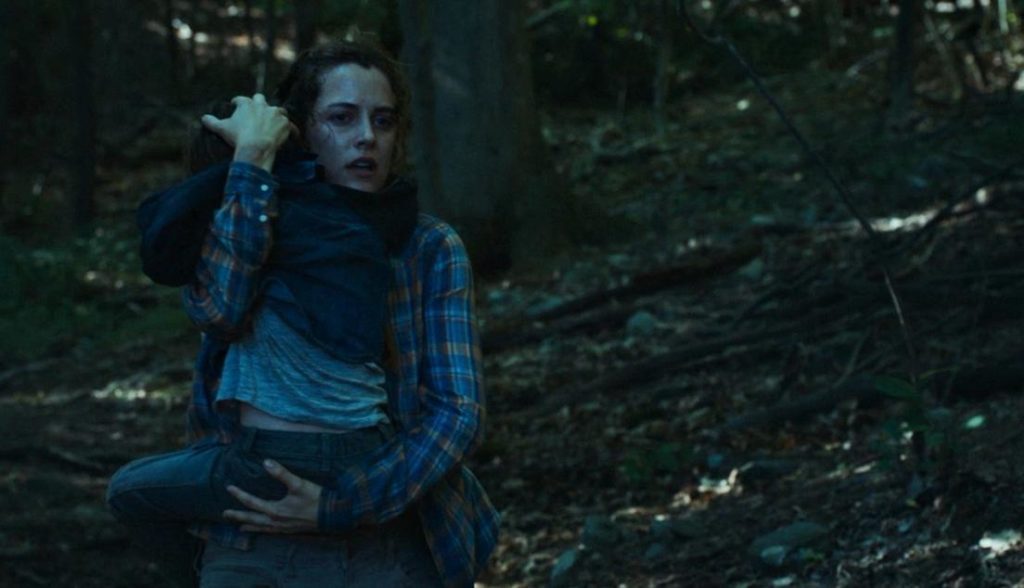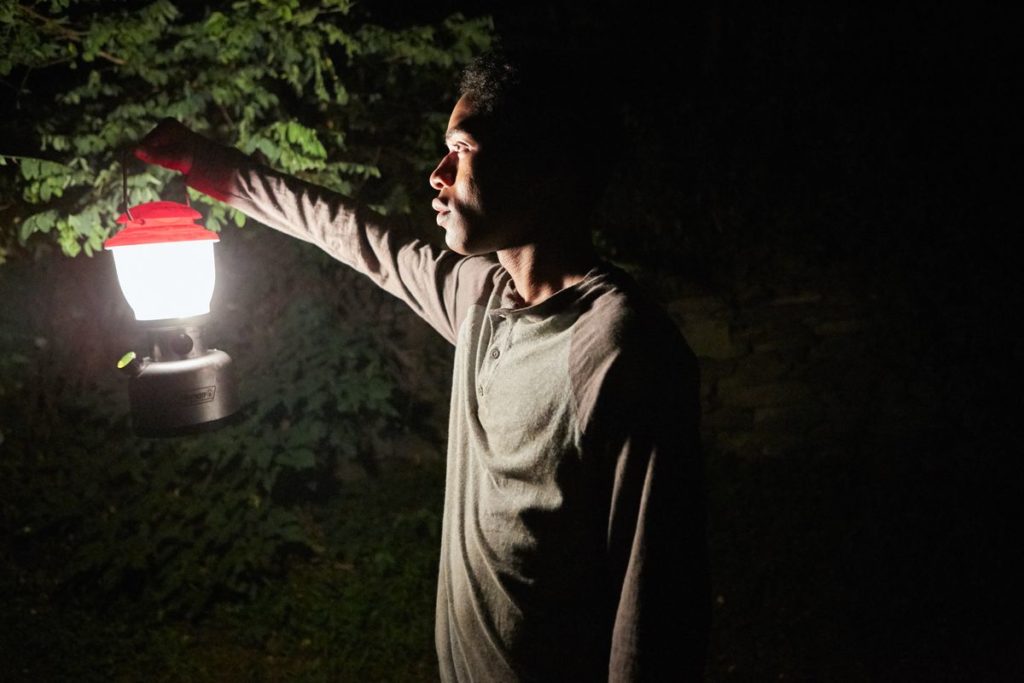It must be said that when describing “It Comes at Night,” I use the term “horror” with some reluctance and at the risk of misleading. Frightening the audience never feels like the primary objective of any unnerving scene in the film; it is more of a side-effect. Not giving a name or face to any tangible monster or threat, Director Trey Edward Shults opts for an unflinching focus on the effects of this horror scenario on the psychology of the characters. This ambiguity instead adds a layer of second-guessing as the audience are not sure themselves what they are to beware of. By the end of the film, the horror aspects are almost purely for context, informing character decisions through fear and desperation.
Although, that is not to say that there aren’t moments of terror for the audience too. The film features some truly disquieting images (including the film’s chilling final shot), yet it is the camerawork throughout the film that builds fear consistently. In scenes set at night, there is an overwhelming claustrophobia as the camera peeks around the narrow corners of the house, bathed in shadows cast by lamplight. In day, things open up as the scenes tend to take place outside. Here, there are frequent slow zooms on the different characters as they go about their business, giving the constant sense of an encroaching predator just beyond the borders of everyone’s vision. This conveys the constant vulnerability felt by the characters that keeps them on edge, wary of their surroundings and each other at all times.

Shults uses paranoia and suspicion to fuel character decisions in a way that is reminiscent of the 1968 classic, “Night of The Living Dead,” in which a group of strangers are forced to hide away together inside a farmhouse to escape a hoard of zombies. Both films use both the possibility that anyone may be secretly infected, on top of the riskiness of having to trust strangers, to plant seeds of mistrust. However, in place of any tension caused by being in an alien situation, the premise of “It Comes at Night” engenders a different source of tension between its characters. This film takes place sometime after its world has fallen into chaos. Therefore, everyone has a history in this chaos and is very likely to have done questionable things in order to have made it this far. This tacit truth looms over every interaction and makes unreserved trust between the characters impossible.
Acting as the perfect foil to the more seasoned older characters is Kelvin Harrison Jr.’s Travis, who is coming of age in this post-apocalyptic world. Perhaps having lost the least of his humanity thus far, Travis is well-meaning despite his brutal environment, with a pure naivety but also a clear-headed perception that the others lack. Harrison gives the most memorable performance of the cast as the sensitive and watchful youth and provides a great point of view for audiences to experience the characters of both families. The film establishes the two opposing sides to the bond between the two families. There is a budding friendship formed from lifestyle in which they survive alongside one another yet behind the smiles and platitudes, there is mutual suspicion that never dies.
“It Comes at Night” takes a subdued and sombre approach to horror that slowly shifts uncertainty into intense paranoia, making for an uneasy watch. Whilst this is successful in portraying of characters in a world in where survival may be at the cost humanity, this is a theme that has been covered extensively in the genre and with more depth than the succinct nature here may allow. The film’s scope does not expand or offer much in the way of new ideas by the time it reaches its predictable resolution. Having said that, Shults’ refreshingly restrained approach to horror and unsettling command of mood make this more than worthy of your attention.


